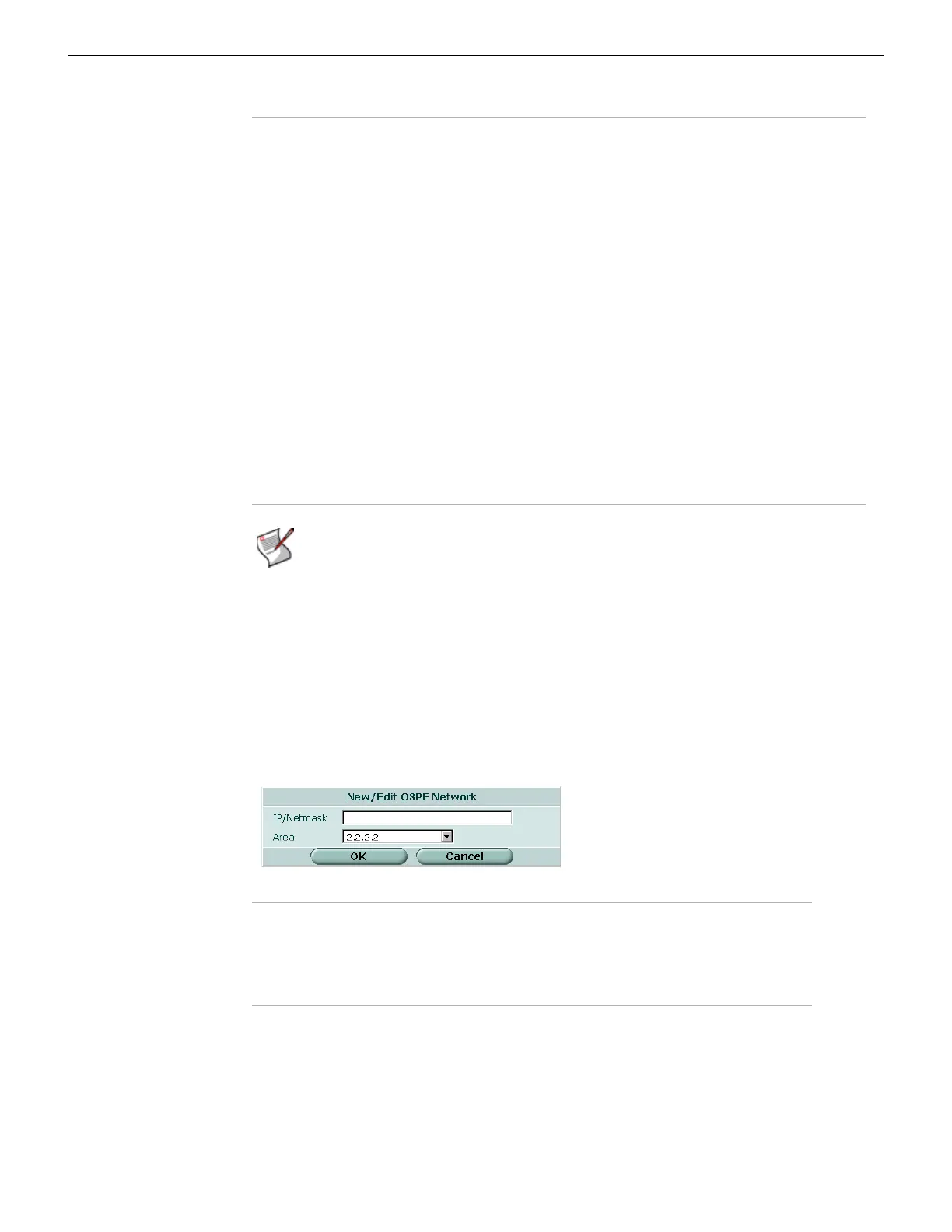OSPF Router Dynamic
FortiGate Version 4.0 MR1 Administration Guide
368 01-410-89802-20090903
http://docs.fortinet.com/ • Feedback
Specifying OSPF networks
OSPF areas group a number of contiguous networks together. When you assign an area
ID to a network address space, the attributes of the area are associated with the network.
To assign an OSPF area ID to a network, go to Router > Dynamic > OSPF, and then
under Networks, select Create New. To change the OSPF area ID assigned to a network,
go to Router > Dynamic > OSPF and select the Edit icon in the row that corresponds to
the network.
Figure 193: New/Edit OSPF Network
Area Type a 32-bit identifier for the area. The value must resemble an IP address in
dotted-decimal notation. Once you have created the OSPF area, the area IP
value cannot be changed; you must delete the area and restart.
Type Select an area type to classify the characteristics of the network that will be
assigned to the area:
Regular — If the area contains more than one router, each having at least one
OSPF-enabled interface to the area.
NSSA — If you want routes to external non-OSPF domains made known to
OSPF AS and you want the area to be treated like a stub area by the rest of the
AS.
STUB — If the routers in the area must send packets to an area border router in
order to reach the backbone and you do not want routes to non-OSPF domains to
be advertised to the routers in the area.
Authentication Select the method for authenticating OSPF packets sent and received through all
interfaces in the area:
None — Disable authentication.
Text — Enables text-based password authentication. to authenticate LSA
exchanges using a plain-text password. The password is sent in clear text over
the network.
MD5 — Enable MD5-based authentication using an MD5 cryptographic hash
(RFC 1321).
If required, you can override this setting for one or more of the interfaces in the
area. For more information, see “Selecting operating parameters for an OSPF
interface” on page 369.
Note: To assign a network to the area, see “Specifying OSPF networks” on page 368.
IP/Netmask Enter the IP address and network mask of the local network that you want
to assign to an OSPF area.
Area Select an area ID for the network. The attributes of the area must match
the characteristics and topology of the specified network. You must define
the area before you can select the area ID. For more information, see
“Defining OSPF areas” on page 367.
